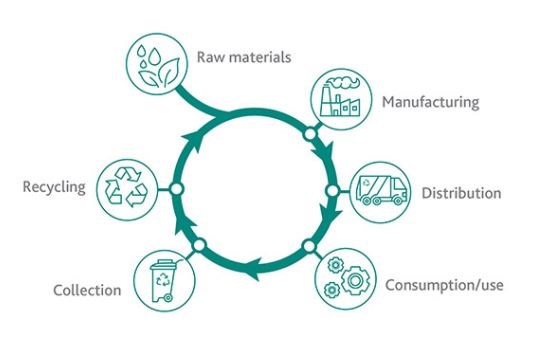Partners Target Bioplastic Interior Trim
Molecular recycling and non-petroleum feedstocks take shape
#interior
Kingsport, Tenn.-based Eastman Chemical is teaming with Italy’s Gruppo Maip to develop interior components made from biomaterials and recycled plastics. The companies are targeting Class A surfaces, such as molded-in-color trim pieces.
The products are based on Eastman’s “advanced circular recycling” (ACR) technology, which was announced last year. Gruppo’s Maip, which specializes in engineered thermoplastic materials, will serve as the compounder.
Why It Matters
Plastic waste is a huge problem, with pollution piling up around the world. And it’s getting worse.
More than 260 million tons of plastic are produced worldwide every year. This is projected to grow to about 460 million tons by 2030, according to a 2018 study by McKinsey.
Currently, just 16% of the material is collected for recycling and only 12% is actually recycled. The rest is either incinerated (25%), goes to landfills (40%) or ends up in unmanaged dumps or littering the environment (19%).
Auto Circulation
The auto industry has done a much better job, with plastic recycling rates as high as 85%.
But as plastic content continues to inch up (accounting for about 15% of a vehicle’s weight) as lightweighting efforts intensify to meet stricter fuel economy and emissions regulations, there’s more pressure to use recycled plastics and non-petroleum biomaterials.
Green Interiors
"Through Eastman's circular recycling technologies, OEMs will now be able to specify recycled plastics in critical Class A components," says Eligio Martini, president of Gruppo Maip. "This partnership allows us to develop breakthrough specialty plastic formulations to meet aggressive targets for sustainable content and replacement of petroleum-based materials.”

(Image: Eastman)
Two Eastman formulations will be used.
Tritan Renew is a copolyester with as much as 50% recycled content derived from post-consumer and postindustrial waste streams. Eastman says its carbon renewal technology, which breaks down waste plastics into molecular-level building blocks (also known as chemical recycling), enables the recycled material to match the performance properties of virgin plastics. By comparison, more common mechanical recycling processes typically result in some performance degradation.
The other product family is Treva Renew, which uses as much as 48% biobased content sourced from sustainably managed forests (certified under the U.S. Dept. of Agricultural’ s BioPreferred program). Treva also applies Eastman’s carbon renewal technology, using mixed waste plastics in place of petroleum-based polycarbonate, ABS and PC-ABS blends.
Eastman says its ACR process can be used for a broad set of waste plastics that traditional mechanical recycling methods can’t handle effectively. These include polyesters, polypropylene, polyethylene, and polystyrene that are obtained from a variety of sources, including single-use plastics, textiles and carpet.

The company also is working with a variety of trade associations and coalitions to move from a linear “take-make-waste” system to a circular economy. The groups aim to:
- Eliminate all problematic and unnecessary plastic items
- Make all remaining plastics reusable, recyclable, or compostable
- Circulate all used plastic items to keep them in the economy and out of the environment
Additional information is available from the New Plastics Economy Global Commitment, U.S. Plastics Pact and International Sustainability and Carbon Certification group.
RELATED CONTENT
-
On Electric Pickups, Flying Taxis, and Auto Industry Transformation
Ford goes for vertical integration, DENSO and Honeywell take to the skies, how suppliers feel about their customers, how vehicle customers feel about shopping, and insights from a software exec
-
On Automotive: An All Electric Edition
A look at electric vehicle-related developments, from new products to recycling old batteries.
-
On Fuel Cells, Battery Enclosures, and Lucid Air
A skateboard for fuel cells, building a better battery enclosure, what ADAS does, a big engine for boats, the curious case of lean production, what drivers think, and why Lucid is remarkable








